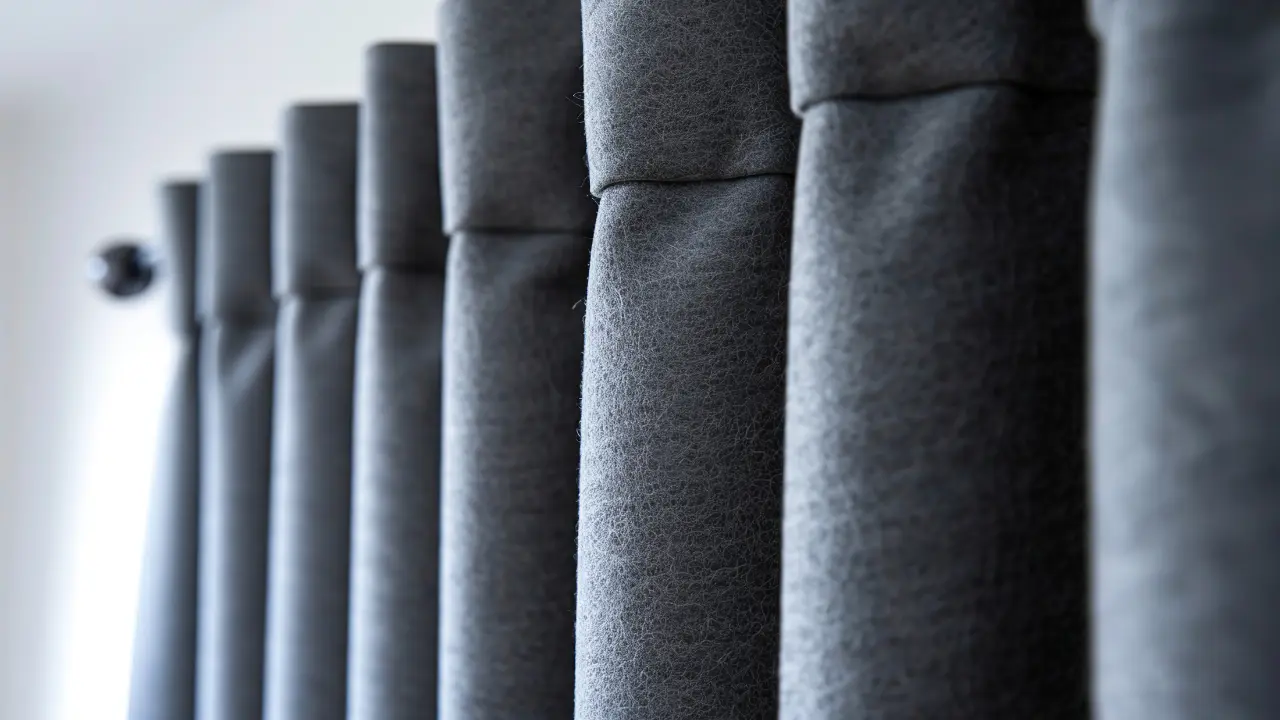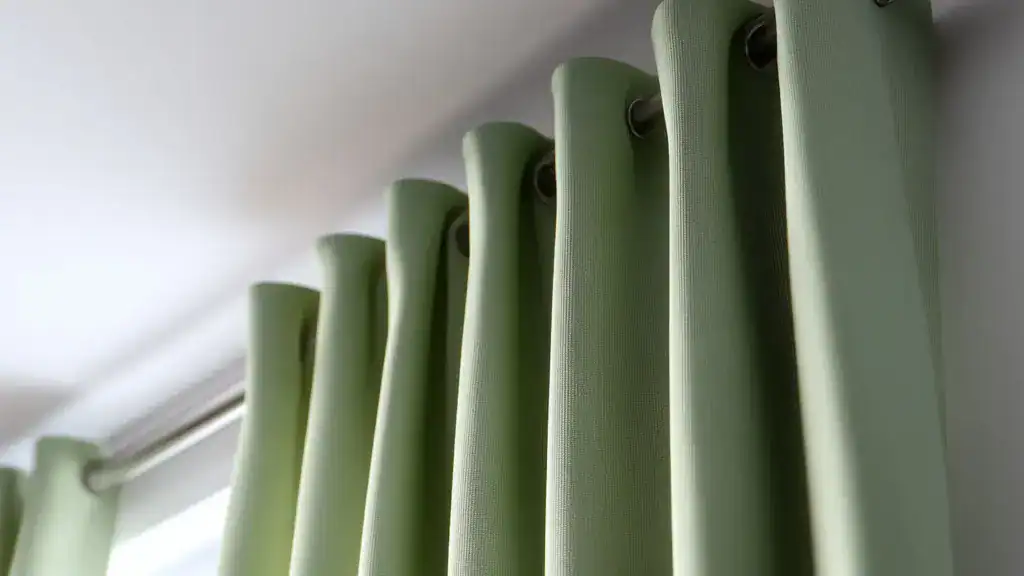Choosing the Best Sound-Dampening Curtains for Your Quiet Space

You may have heard of soundproof curtains. There’s no such thing.
Total silence is a myth, like the Fountain of Youth. If you need it, you might consider building an underground bunker with blast-proof steel doors.
However, sound-dampening curtains can significantly reduce incoming noise, enhance the quality of your sleep, sharpen your focus, and support your peace of mind.
How Do Sound-Dampening Curtains Work?
Sound-dampening curtains combine several layers of dense, heavy materials, such as polyester, velvet, or special acoustic fabrics. These layers trap sound waves before they enter a room. They don’t block all sound, but they block much of it.
Think of them as sound sponges, soaking up unwanted noise from outside while also preventing indoor sounds (e.g., snoring) from leaking out.
As a bonus, sound-dampening curtains offer room darkening, greater privacy, thermal insulation. The thick materials help to regulate room temperature by minimizing heat transfer through windows.
Who Needs Sound-Dampening Curtains?
- Home Office Workers: Need to concentrate? Sound-dampening curtains can block out distractions.
- Night Shift Workers: The heavy fabrics create a dark, quiet environment for restful sleep.
- Apartment Dwellers: Thin walls? Loud neighbors? Sound-dampening curtains can help.
- Parents with Young Children: Light-sleeping kids will enjoy better naps and nights.
- Musicians or Podcasters: Create your own recording studio with little outside noise to interfere.
Choosing the Best Sound-Dampening Curtains
The options may seem overwhelming, but a good set of curtains is determined by fabric, weight, size, and design. Look for the best curtains in those categories.
Fabric
The most common materials used are velvet, polyester, and acoustic fabrics.
- Velvet is soft yet heavyweight and can block up to 85% of outside noise.
- Polyester can muffle around 40-50% of outside noise.
- Acoustic fabrics are specially designed with multiple layers and dense fibers for maximum sound absorption. They’re highly effective but more expensive.
Weight
Generally, the heavier the curtain, the better it will block out sound. Curtains should weigh at least 2–3 pounds per square foot.
The more layers a curtain has, the better it will block sound. Opt for curtains with 2–3 layers.
Size
Sound-dampening curtains should cover your entire window and extend beyond the edges by several inches. This ensures that no sound can leak through gaps between the curtain and the wall.
Design
A functional curtain doesn’t have to be boring! Soundproof curtains come in a range of colors and styles, so find something that complements your decor.
Installation Tips
- Install the curtain rod a few inches above the window frame and extend it well beyond the sides. This guarantees maximum coverage and better noise reduction.
- If noise is considerable, use a double curtain rod to hang two layers of sound-dampening curtains. This can double the noise reduction effect.
- For even better soundproofing, secure the edges of the curtains to the wall using Velcro strips. This prevents sound from leaking through the gaps.
FAQs: More About Sound-Dampening Curtains
Q: Can sound-dampening curtains block all noise?
No. However, they can significantly reduce the sound that enters a room, especially high-frequency noises like traffic or chatter.
Q: Do sound-dampening curtains also block light?
Most sound-dampening curtains also have blackout properties, making them excellent for blocking light and sound.
Q: Are sound-dampening curtains expensive?
The cost varies widely depending on the brand, material, and size. While high-end curtains can be pricey, affordable choices are also available.
Q: Can I install sound-dampening curtains myself?
Installing sound-dampening curtains is usually a straightforward process that most people can do themselves with basic tools.
Q: Do sound-dampening curtains work for all types of noise?
Sound-dampening curtains are most effective against airborne noise, such as voices or traffic. They’re less effective against impact noise, like footsteps or banging.
Q: How do I maintain my sound-dampening curtains?
Regularly vacuum or dust them to remove surface dirt and allergens. Depending on the fabric, you may also be able to machine wash them on a gentle cycle or spot clean as needed.
Q: How long will sound-dampening curtains last?
The lifespan depends on the material quality and how well it’s maintained. Polyester fabrics tend to be more durable than others, like velvet or certain acoustic materials.
Q: Can I use regular curtains as sound-dampening curtains?
Regular curtains provide some noise reduction but won’t be as effective as dedicated sound-dampening curtains.


